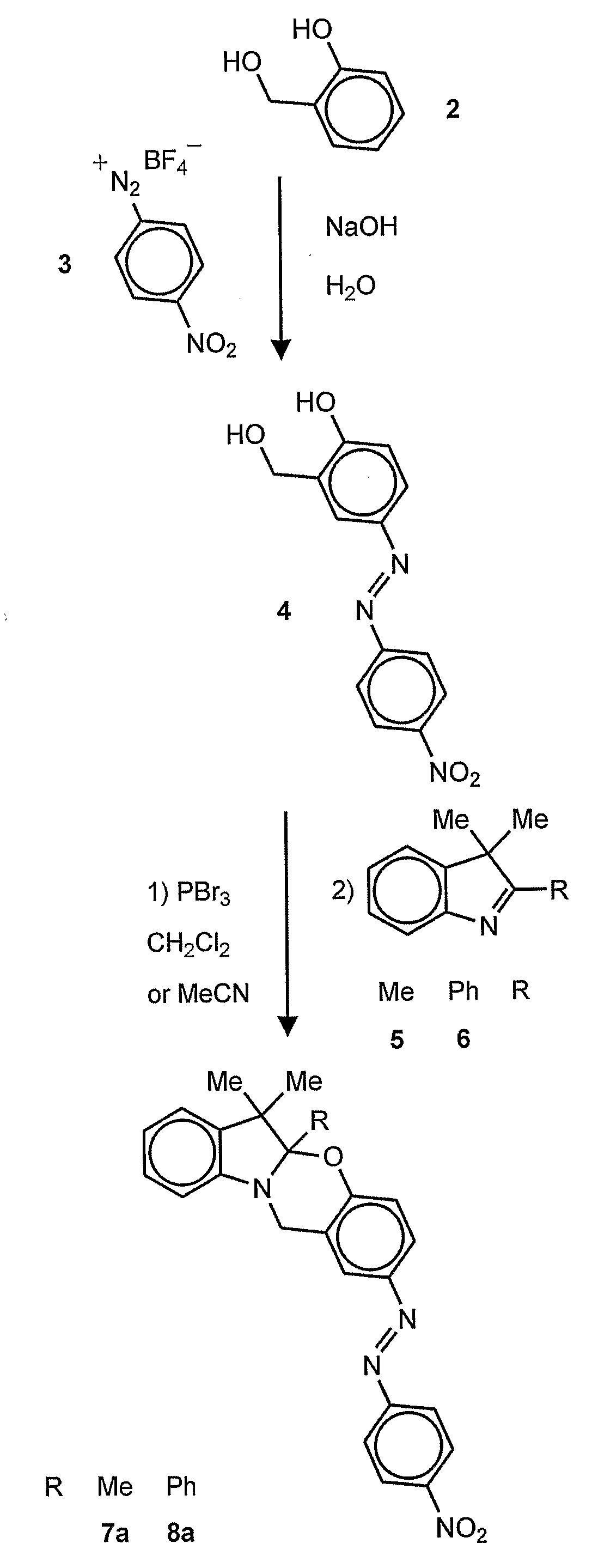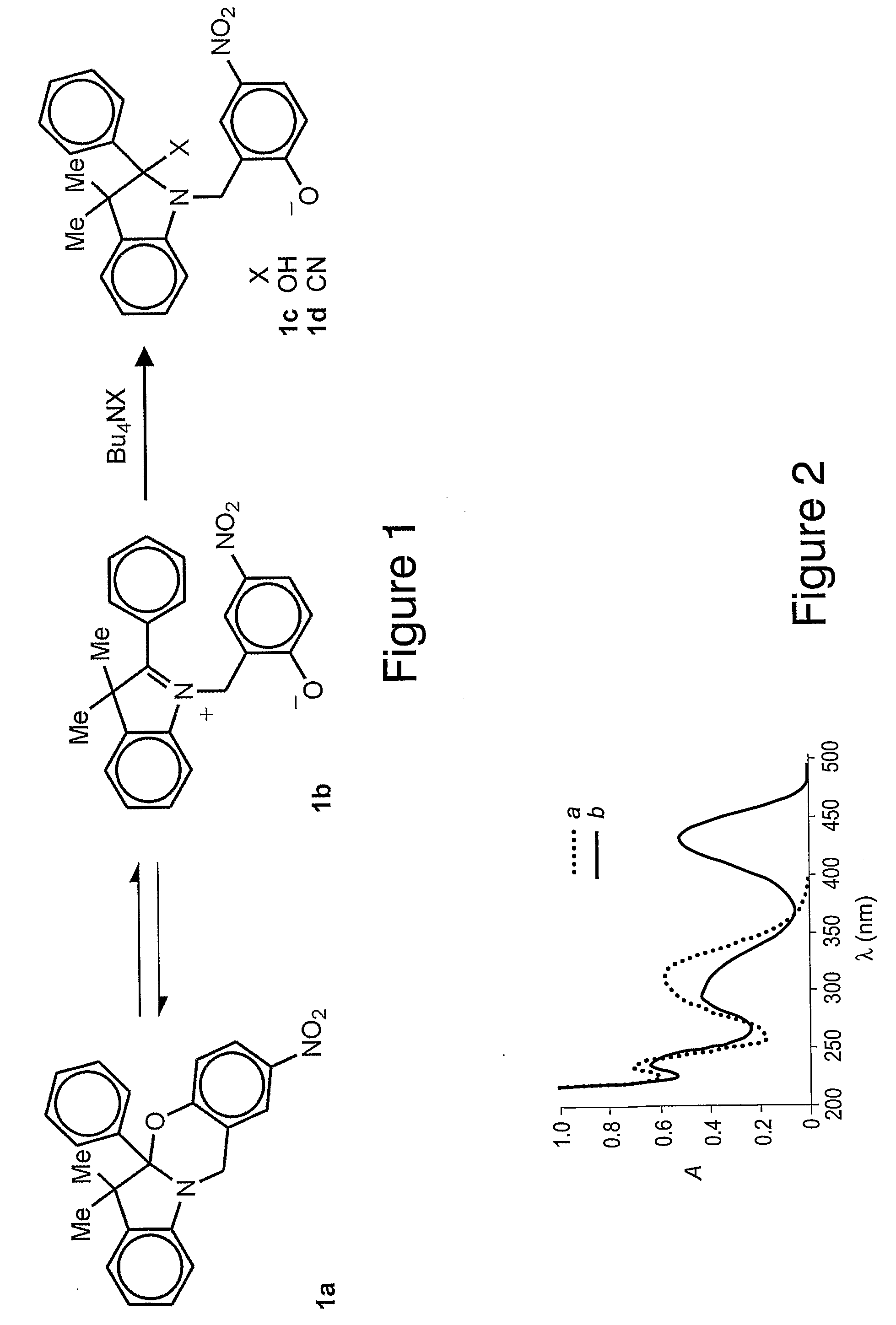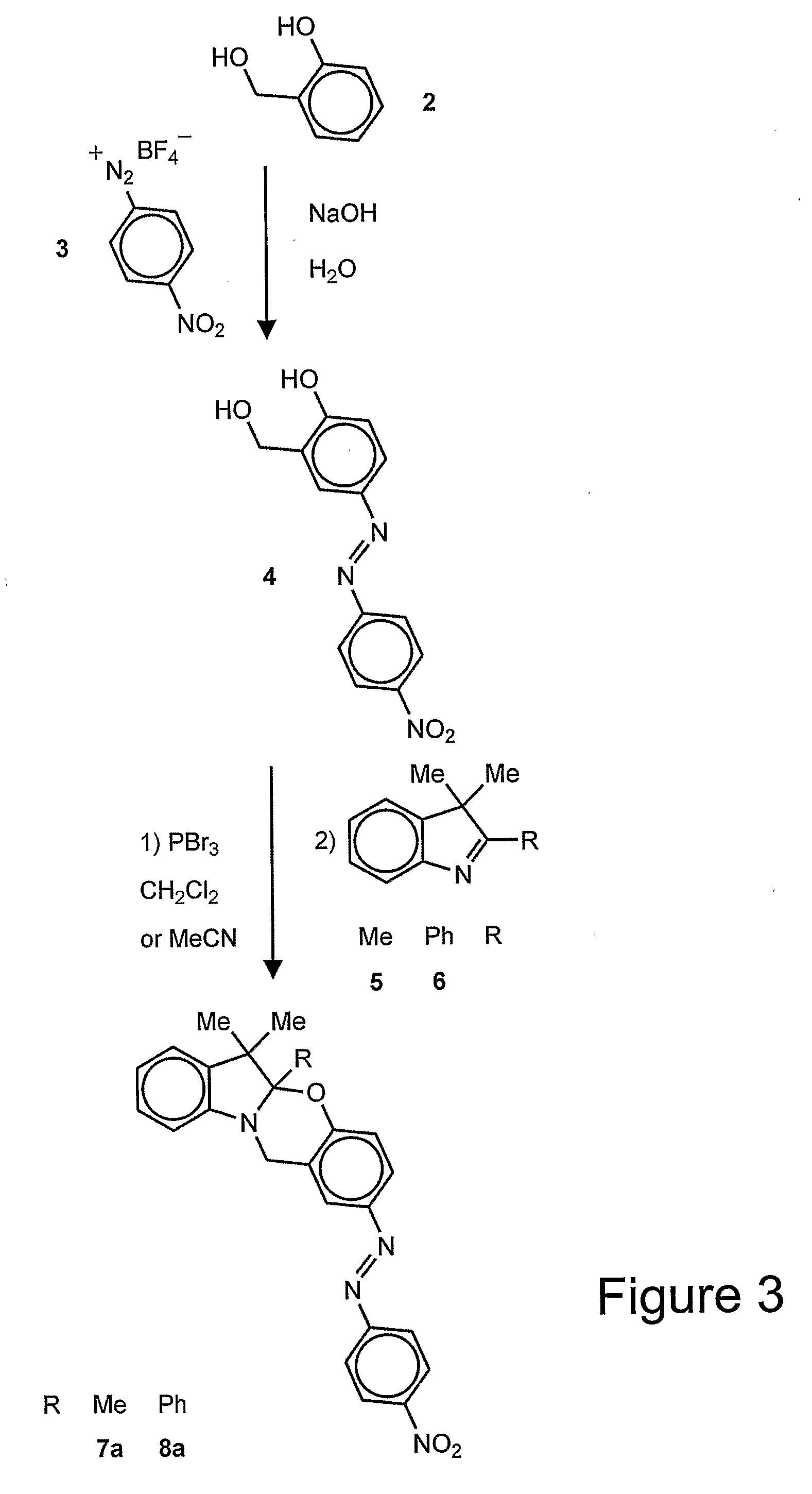Colorimetric detection of cyanide with a chromogenic oxazine
a colorimetric detection and cyanide technology, applied in the field of chromogenic oxazine, can solve the problems of contaminating drinking water, cyanide is extremely toxic, and cyanide does not easily decompose in the environment, and it is a serious threat to human health
- Summary
- Abstract
- Description
- Claims
- Application Information
AI Technical Summary
Benefits of technology
Problems solved by technology
Method used
Image
Examples
Embodiment Construction
[0036]In one embodiment of the invention, a chromogenic compound of the formula is provided:
wherein R1 is an alkyl (e.g., methyl, ethyl, propyl, isopropyl, butyl, isobutyl), a substituted alkyl, a cycloalkyl (e.g., cyclopentyl, cyclohexyl), a substituted cycloalkyl, an aryl (e.g., phenyl), or a substituted aryl and R2 is a chromophore (e.g., nitroso, nitro, azo dyes). R1 is preferably methyl and R2 is preferably nitrophenylazo (not nitro), but any oxazine that is capable of being cleaved by cyanide to form a phenolate chromophore can be used. A specific example of the oxazine compound is 2-(4′-nitrophenylazo)-5a,6,6-trimethyl-5a,6-dihydro-12H-indolo[2,1-b][1,3]benzooxazine.
[0037]A solution comprising one or more of the compounds may be provided, wherein the compound(s) is soluble in the solution. The solution may contain an organic solvent (e.g., aliphatic hydrocarbons, aromatic hydrocarbons, halogenated aliphatic hydrocarbons, halogenated aromatic hydrocarbons, or any mixture there...
PUM
| Property | Measurement | Unit |
|---|---|---|
| Molar density | aaaaa | aaaaa |
| Molar density | aaaaa | aaaaa |
| Nanoscale particle size | aaaaa | aaaaa |
Abstract
Description
Claims
Application Information
 Login to View More
Login to View More - R&D
- Intellectual Property
- Life Sciences
- Materials
- Tech Scout
- Unparalleled Data Quality
- Higher Quality Content
- 60% Fewer Hallucinations
Browse by: Latest US Patents, China's latest patents, Technical Efficacy Thesaurus, Application Domain, Technology Topic, Popular Technical Reports.
© 2025 PatSnap. All rights reserved.Legal|Privacy policy|Modern Slavery Act Transparency Statement|Sitemap|About US| Contact US: help@patsnap.com



